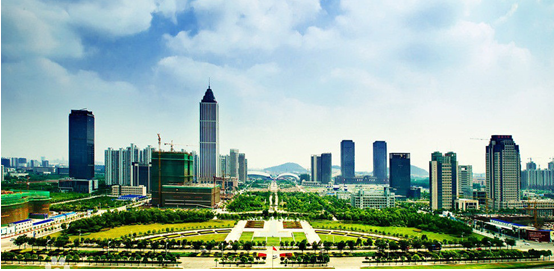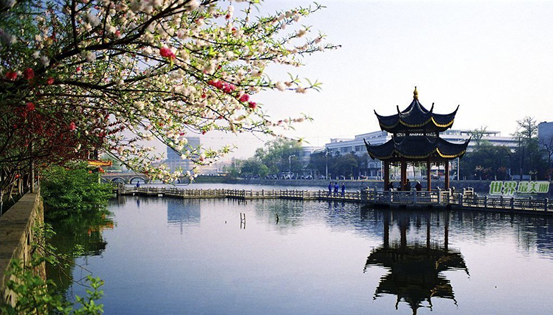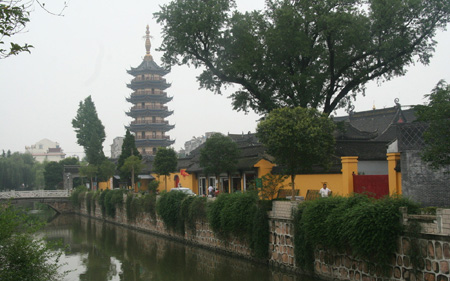Nantong
Updated:2015-12-08
Overview
Nantong City is located at the north of Yangtze River Delta close to the sea, looking over Shanghai through the Yangtze River. The city has been dubbed as "Gate to the Sea and River" and "The First Window on the Changjiang River". Covering a land area of 8,544 square kilometers with a population of 7,630,000 people, it is one of China's coastal cities earliest opening to the world. The municipal government has the jurisdiction over 2 counties, 3 cities and 3 districts, and a state-level Nantong Economic and Technological Development Area.
Nantong boasts a long history more than 5000 years. The court scholar in late Qing Dynasty, Zhang Jian, also an industrialist and educator, led the fashion of modernization to make Nantong as a model city in planning and construction in modern history. Wu Lianyong, an academician of the Chinese Academy of Sciences, Chinese Academy of Engineering, and a famous architect and city planner, praised Nantong, as the first city in Chinese modern history.

Location
Nantong City is located at the north of Yangtze River Delta close to the sea, looking over Shanghai through the Yangtze River. Covering a land area of 8,544 square kilometers with a population of 7,630,000 people, it is one of China's coastal cities earliest opening to the world. The municipal government has the jurisdiction over 2 counties, 3 cities and 3 districts, and a state-level Nantong Economic and Technological Development Area.
Climate
Nantong features a humid subtropical climate, with four distinct seasons. Winters are chilly and damp, and cold northwesterly winds from Siberian can force temperatures to fall below zero at night although snowfall is relatively rare. Summers are hot and humid, often with downpours or freak thunderstorms. Monthly average temperature ranges from 3.1 °C (37.6 °F) in January to 27.2 °C (81.0 °F) in July. Following the plum rain in June and early July comes the rainiest part of the year.

Economy
Nantong is historically known as an agricultural area and a traditional site for salt-making. Its principal agricultural products include cotton, rice, wheat, fishing, and fruit. Currently, the city is striving to upgrade its farming sector and expand production of organic foods.
Today, Nantong is one of many fast-developing coastal cities in China. With the opening of Sutong Bridge in April 2008 and Chonghai Bridge in 2009, the city has been recognized as the No.1 city in the Yangtze River Delta Economic Zone attracting foreign investment, surpassing its rivals Suzhou, Hangzhou and Nanjing.
History & Culture
From the Han dynasty up until the Tang dynasty, what is now called Nantong was a minor county subordinate to Yangzhou. By 958 AD, it had developed into a new, independent prefecture called Tongzhou ("Opening Prefecture", possibly from its position near the mouth of the Yangtze). The increasing wealth of Yangzhou caused Tongzhou to be once again eclipsed as an administrative center in 1368 AD. When Tongzhou finally regained prefecture status in 1724, it was renamed Nantong ("Southern Tong") to avoid confusion with another Tongzhou, located near Beijing.
The prosperity of Nantong has traditionally contributed to salt production, rice and cotton agriculture, and especially the production of cotton textiles. A local statesman and industrialist named Zhang Jian founded Nantong's first modern cotton mill in 1899. He then developed an industrial complex that included flour, oil, and silk reeling mills, a distillery, and a machinery shop. He also founded a shipping line and reclaimed saline agricultural land to the east of Nantong for cotton production.


